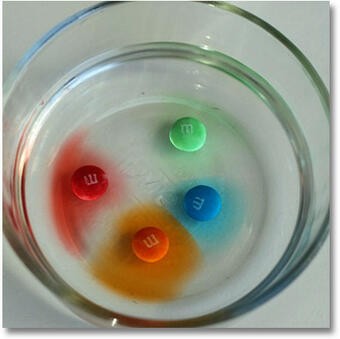Water is often referred to as the “universal solvent,” a title it has earned due to its remarkable ability to dissolve a greater number of substances than any other liquid. This extraordinary property of water is not just a scientific curiosity; it’s fundamental to life as we know it and plays an indispensable role in various natural processes and biological functions on Earth. Whether it’s flowing through the atmosphere, seeping into the ground, or circulating within our bodies, water acts as a carrier, transporting essential chemicals, minerals, and nutrients wherever it goes.
This exceptional solvent capability of water stems from its unique chemical composition and distinctive physical attributes, primarily its molecular structure. A water molecule is composed of two hydrogen atoms and one oxygen atom, arranged in a polar configuration. This polarity means that one side of the molecule, where the hydrogen atoms are located, carries a slight positive electrical charge, while the opposite side, where the oxygen atom is, has a slight negative charge. This uneven distribution of electrical charge allows water molecules to be strongly attracted to many other types of molecules, a phenomenon scientifically known as adhesion and cohesion of water.
Water’s polar nature enables it to interact effectively with compounds like salt (NaCl). The attraction between water molecules and the ions in salt is so potent that water can disrupt the ionic bonds holding the sodium (Na+) and chloride (Cl-) ions together in the salt crystal. As a result, salt dissolves in water, demonstrating water’s solvent prowess.
The Vital Role of Water as a Solvent in Our Kidneys
The solvent properties of water are particularly crucial for the functioning of our kidneys, playing a vital role in maintaining our health and sustaining life. Kidneys are the body’s filtration system, responsible for removing waste products and toxins that accumulate from the food and drinks we consume and from metabolic processes. To effectively eliminate these substances, the kidneys rely on water. As blood flows through the kidneys, water acts as a solvent, dissolving waste materials. This dissolved waste is then efficiently flushed out of the body as urine, thanks to water’s ability to carry these substances away. Without water’s solvent action, our kidneys would not be able to perform their essential cleansing function, leading to a buildup of harmful toxins in the body.
How Water Dissolves Salt at a Molecular Level
To understand why salt dissolves in water, we need to delve into the molecular interactions between water and salt. Both water and salt are polar compounds, meaning they have regions of positive and negative charge. Salt compounds, like sodium chloride (NaCl), are held together by ionic bonds, which are strong electrostatic attractions between positively charged sodium ions (Na+) and negatively charged chloride ions (Cl-). Water molecules, although held together by covalent bonds, are also polar, with the oxygen atom carrying a partial negative charge and the hydrogen atoms carrying partial positive charges.
When salt crystals are introduced to water, the slightly positive ends of water molecules are attracted to the negatively charged chloride ions, and the slightly negative ends of water molecules are attracted to the positively charged sodium ions. This attraction is stronger than the ionic bonds holding the salt crystal together. Water molecules surround each ion, effectively pulling them apart and breaking the ionic bonds. Once separated, sodium and chloride ions are individually surrounded by water molecules, preventing them from rejoining. This process, known as dissolution, results in the salt seemingly disappearing into the water, forming a homogeneous solution where the salt ions are uniformly dispersed throughout the water.
In conclusion, water’s designation as the “universal solvent” is well-deserved, attributed to its polar molecular structure and its ability to dissolve a vast array of substances. This solvent property is not just a scientific definition but a critical characteristic that underpins life on Earth, from facilitating biological processes within our bodies to shaping geological phenomena across the planet.
